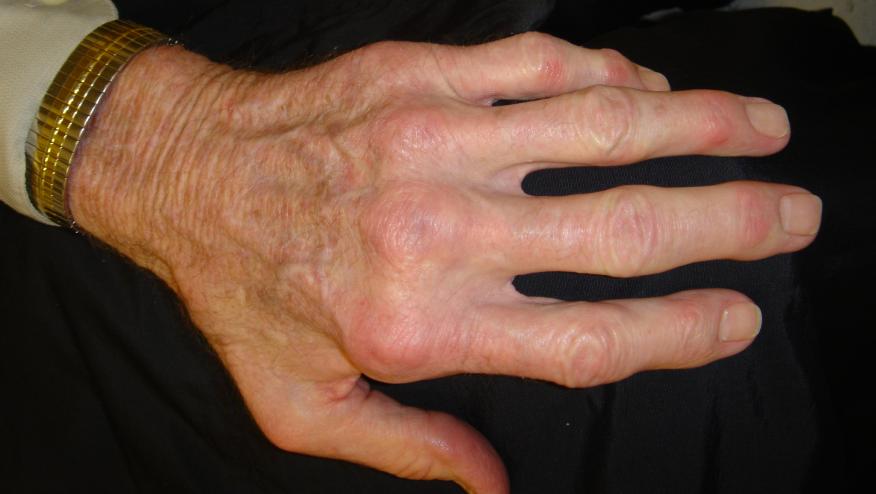EULAR 2024 – Day 2 Report (A Difficult RA Day) Save

Day 2 at EULAR 2024 was a big poster day for many with several good sessions and oral presentations on Preventing RA, new vasculitis therapies and a session devoted to the 50th anniversary of the Moll & Wright Criteria.
I most enjoyed a long session on “Difficult-to-treat and multi-drug resistant Rheumatoid arthritis”. This series of research presentations defined the D2T-RA population, entry criteria, methodological considerations and treatment outcomes. Here are a few of the most informative presentations.
D2T-RA from an Early RA Cohort
- Lessard and colleagues (OP0118) set out to study D2T-RA from an early arthritis inception cohort (instead of established disease), before they’ve received biologic therapy. They drew from their EUPA 887 patient cohort of early RA patients and identified 126 RA patients who started a biologic. From this group 34 (27%) met their criteria of D2T-RA (requiring >2 b/tsDMARDs or having SJC >3 or prednisone >7.5 mg/d while on a 2nd b/tsDMARDs). They identified the following predictors of future D2T-RA - female, high swollen joints, erosions, pulmonary disease, depressive symptoms and fatigue. (Caveat: Other studies have shown the frequency to D2T-RA to be between 5-20% of RA patients; but my reviews show that roughly 10% of RA patients will meet EULAR criteria for D2T-RA. This study showed a very high rate of D2T-RA (27%) but the denominator here is RA patients needing to start a biologic.)
Drug Retention in D2T-RA
- A study from the Czech ATTRA Registry (op0137) cohort of 8493 RA patients found that 11% (n=939) met EULAR D2T-RA criteria. Their D2T-RA patients had active disease with >70% seropositivity, mean DAS28 of 5.3, TJC 10+ and SJC 6.8 and CRP levels of 19.5 mg/L. Most patients were initially treated with TNF inhibitors with 408 taking other non-TNFi agents. When they evaluated drug survival, they found that 24% were primary drug failures, 41% were secondary failures and 14% failed for intolerance/toxicity. At 30 months, half of patients failed their biologic. The best survival was seen with rituximab (median survival of 72 mos.), followed by JAKi (35 mos.), IL-6i (34 mos.), abatacept (22 mos.) and TNFI (18 mos.). Reasons for greater retention were unknown but partly attributed to every 6-month dosing and surprising efficacy. Remember, this is an observation and not necessarily proof!
BRASS D2T-RA Experience
- Paudel and colleagues (OP0156) sought to validate the EULAR criteria using their BRASS RA cohort. While there are 6 elements to the EULAR criteria, they boil down to the patient being: 1) a multiple DMARD failure; 2) with persistent disease activity (despite therapy) and 3) patient and physician perception of poor disease control. BRASS Criteria for D2T-RA were similar to EULAR, with the exception of allowing extraarticular manifestations and elevated RAPID3, as well as patient and physician global activity scores > 3/10. By EULAR criteria they calculated their prevalence to be 14.4/100 Pt-Yrs with an overall D2T RA range from 5.1–27.0/100 persons. Risk factors were being younger at , female, less education, more comorbidities, greater disease burden, greater steroid use, lower MTX use and higher BMI.
From many of these studies we heard a consistent profile of who is at risk for D2T-RA: female, younger onset, obesity, erosions, smoking, pain, fatigue and depression.










If you are a health practitioner, you may Login/Register to comment.
Due to the nature of these comment forums, only health practitioners are allowed to comment at this time.